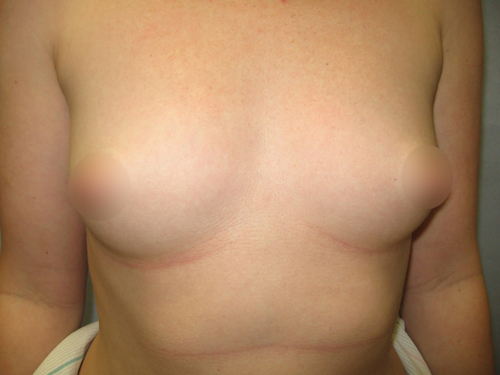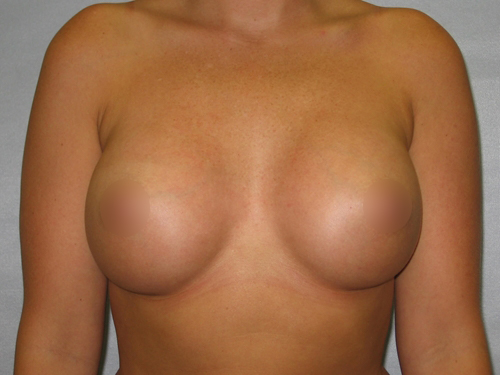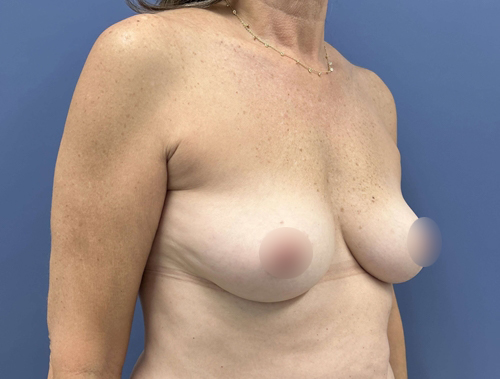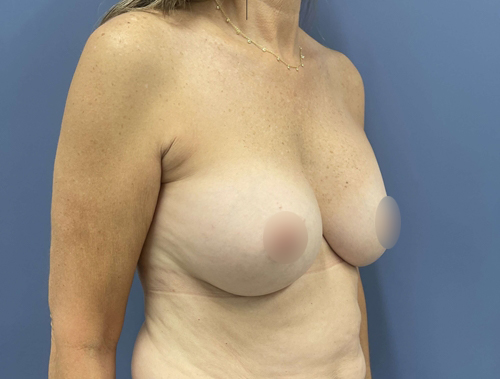Dr. Glenn Lyle, is a board-certified plastic surgeon based in Raleigh, NC. Over the years, he has worked with countless women who have chosen breast implants to enhance their confidence and self-image. While breast implants are designed to be durable, they are not lifetime devices. Ensuring your implants remain in good condition is essential for both your peace of mind and overall health. Regular monitoring can help detect potential complications early and allow you to take appropriate action if needed.
In this guide, Dr Lyle will walk you through the essential steps to perform a breast implant check, why it is necessary, and what to do if you notice changes. Whether you have recently undergone breast augmentation or have had implants for years, this guide will empower you to take charge of your breast health.
Understanding Breast Implant Health
Why Are Breast Implant Checks Important?
Breast implants require ongoing care and monitoring. Many women believe that once they get implants, they can simply forget about them, but that is not the case. Regular self-checks and professional evaluations help ensure the longevity of your implants and detect complications before they become serious concerns. These checks are important because they:
- Detect ruptures or leaks early: Breast implants, particularly silicone ones, can experience silent ruptures, meaning there may be no noticeable symptoms. Regular self-checks and imaging can detect these issues before they cause further complications or aesthetic concerns.
- Identify capsular contracture: Over time, some women develop capsular contracture, where scar tissue around the implant tightens and hardens. This can cause discomfort and distort the breast shape. Detecting early signs of firmness or irregularities can help address the issue before it worsens.
- Monitor changes in breast shape or size: Any sudden or gradual change in the appearance of your breasts may indicate a problem such as an implant shift, fluid buildup, or tissue thinning. Early detection can help prevent unnecessary discomfort and improve surgical outcomes if revision is needed.
- Ensure long-term implant safety and satisfaction: Breast implants do not last forever. Regular monitoring ensures that they continue to complement your body and align with your aesthetic goals over time.
Recognizing Common Implant Complications
Being aware of potential complications can help you take prompt action if something seems off. Here are some common implant-related issues to watch for:
- Implant Rupture: Ruptures can occur due to aging implants, trauma, or excessive pressure. With saline implants, a rupture is often immediately noticeable due to deflation. Silicone ruptures, however, may be silent and only detected via imaging. If you notice a change in shape, firmness, or texture, consult your surgeon.
- Capsular Contracture: This occurs when scar tissue forms excessively around the implant, leading to firmness, discomfort, and visible distortion of the breast. In severe cases, it may require corrective surgery.
- Shifting or Displacement: Implants can shift from their original position over time, causing asymmetry. This can result from trauma, aging, or improper healing post-surgery.
- Infection or Inflammation: If you experience prolonged redness, warmth, swelling, or discharge around the implant, this could be a sign of infection requiring immediate medical attention.

Meet Dr. Glenn Lyle
Board Certified Plastic Surgeon
Dr. Glenn Lyle, a board-certified plastic surgeon, has been proudly serving the Raleigh, NC, community at Lyle Plastic Surgery and Aesthetics Center since 2002. With a deep passion for helping patients reclaim their confidence, Dr. Lyle specializes in transformative breast surgery and body contouring procedures. Whether addressing the effects of weight loss, pregnancy, or aging, his expert care and artistic approach empower individuals to look and feel their best. Dr. Lyle is dedicated to creating beautiful, natural results that reflect each patient’s personal journey and goals.
Steps to Perform a Breast Implant Check
Monthly Self-Examination
Performing a breast implant self-check every month can help you become familiar with your body and detect any unusual changes early. Here’s a step-by-step guide:
- Visual Inspection: Stand in front of a well-lit mirror with your arms relaxed by your sides. Observe the size, shape, and position of your breasts. Look for any swelling, asymmetry, dimpling, or skin changes. If you notice visible changes, take note of them and check for progression over time.
- Manual Examination: Using the pads of your fingers, press gently around your breast and implant, feeling for lumps, areas of hardness, or tenderness. Use a circular motion, moving from the outer breast toward the nipple. Pay close attention to areas that feel unusually firm or tender.
- Assess Movement: With your hands on your hips, press down firmly and slightly move your chest muscles. If one or both implants appear restricted in movement or feel stuck in place, this may be a sign of capsular contracture.
- Track Changes: Keep a journal or use your phone to document any new developments, no matter how minor they seem. If a change persists or worsens, schedule a consultation with your surgeon for further evaluation.
Schedule Regular Medical Appointments
While self-checks are essential, professional evaluations provide the most reliable assessment of your implants. An annual visit to your plastic surgeon can help:
- Perform a comprehensive physical examination of your implants and surrounding tissues to check for any irregularities.
- Utilize imaging tests such as ultrasound, MRI, or mammography to confirm the integrity of your implants and detect any silent ruptures or other complications.
- Offer professional recommendations on whether your implants require further monitoring, intervention, or replacement.
“Annual checkups aren’t just about routine exams; they are an opportunity to ensure the longevity of your implants and your continued confidence in your results.”
Monitor for Symptoms of Complications
Your body will often signal when something isn’t right. Contact your surgeon if you experience any of the following:
- Persistent pain or tenderness that does not improve with time. If the discomfort becomes progressively worse, it may be a sign of an underlying issue requiring medical attention.
- Noticeable changes in implant position or shape, such as one breast appearing higher, lower, or more prominent than the other.
- Redness, warmth, or unusual discharge, which may indicate an infection that needs immediate treatment.
- Lumps, tightness, or areas of increased firmness, as these could be signs of capsular contracture or an implant-related complication.
“If you feel that something is off, trust your intuition. You know your body better than anyone else.”
Checklist: Preparing for Your Consultation
Key Questions to Ask Your Surgeon
Going into your consultation with prepared questions ensures you get the most out of your visit. Consider asking:
- How can I tell if my implants are still in good condition?
- What signs should I watch for between checkups?
- How often should I have imaging tests performed?
- What options do I have if my implants develop complications?
- If my implants need replacement, what are my options for revision surgery?
What to Bring to Your Appointment
To make your consultation as productive as possible, bring:
- A detailed list of symptoms or changes you’ve noticed since your last checkup, including the timeline of these changes.
- Any imaging reports, previous surgical records, or relevant medical history to assist in an accurate evaluation.
- A written list of questions to discuss with your surgeon to ensure all concerns are addressed and that you receive tailored advice.
“The more information you bring to your appointment, the better we can tailor a plan to meet your needs and keep your implants in top condition.“
Before and After Photos: Why They Matter
Review Your Surgeon’s Portfolio
Reviewing before-and-after photos can give you a clearer understanding of:
- The surgeon’s expertise and approach to breast augmentation and revisions.
- Realistic expectations for potential corrective procedures if needed.
- Visual reassurance that you are in skilled hands.
Dr. Lyle encourages his patients to browse his online gallery to see real transformations and the high standards of care we uphold.
Surgeon’s Perspective on Implant Health
“Taking a proactive approach to breast implant health isn’t just about longevity – it’s about peace of mind and confidence in your body every day.”
Next Steps: Book Your Consultation
Your health and confidence matter. Let’s work together to ensure your implants remain a source of pride and comfort for years to come.
FAQs About Breast Implant Checks
How often should I perform a self-check on my breast implants?
It is recommended to perform a self-check at least once a month. This allows you to become familiar with your implants and detect any changes early.
What should I do if I notice a lump near my implant?
If you find a lump, don’t panic. Schedule a consultation with your surgeon to evaluate whether it is related to the implant or natural breast tissue.
Can breast implants shift out of place?
Yes, implants can move due to aging, trauma, or changes in weight. If you notice a change in position, see your plastic surgeon for an assessment.
What symptoms indicate a possible implant rupture?
Signs of rupture include changes in shape, pain, swelling, and firmness. Silicone ruptures may not show symptoms and require an MRI for detection.
Are there non-invasive tests to check implant integrity?
Yes, ultrasound and MRI scans are commonly used to assess the condition of breast implants without surgery.
Can I check my implants if I am pregnant or breastfeeding?
Yes, but hormonal changes can affect breast tissue, making it harder to assess. Consult your surgeon for personalized guidance.
Do I need to remove my implants if I develop complications?
Not always. Some complications can be managed non-surgically, while others may require implant replacement or removal based on your surgeon’s advice.
Further Reading
- Read Dr Glenn Lyle’s Blog on Beautifying the Chest–How Breast implants can have dramatic results.
- Read Dr Glenn Lyle’s Blog on Breast Augmentation with Saline Implants, Raleigh, NC
- Read Dr Glenn Lyle’s Blog on Breast Implant Removal Before and Afters Raleigh NC
- Read Dr Glenn Lyle’s Blog on How Can I Check My Own Breast Implants? – Implant Self Examination
- Read Dr Glenn Lyle’s Blog on Breast Implant Rupture Rates are Decreasing As Devices Improve
- Read Dr Glenn Lyle’s Blog on Ideal Implants: What Do you Do If you Have Them?
- Read Dr Glenn Lyle’s Blog on Recalled Breast Implants: Are Yours Recalled? Learn More





